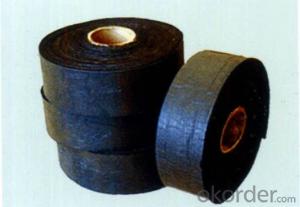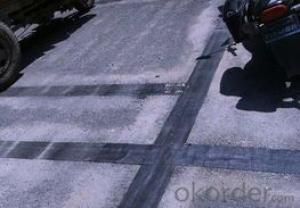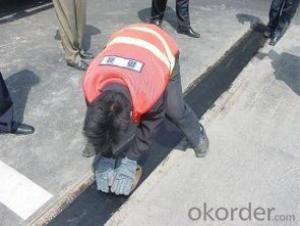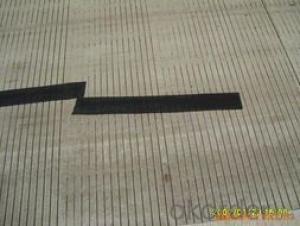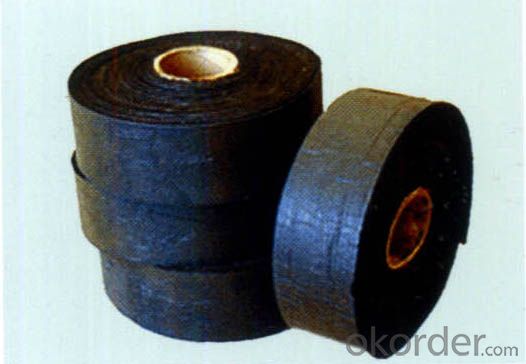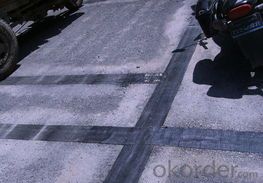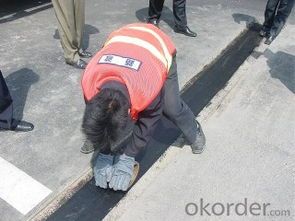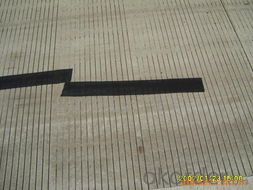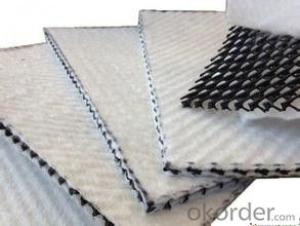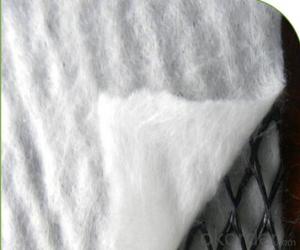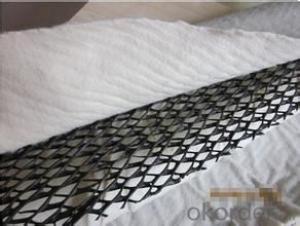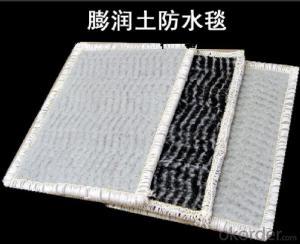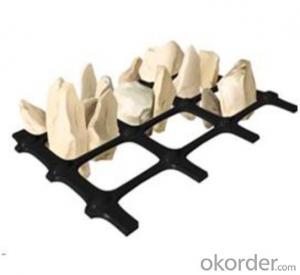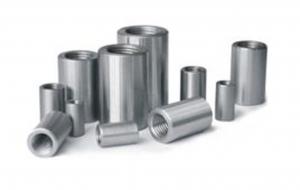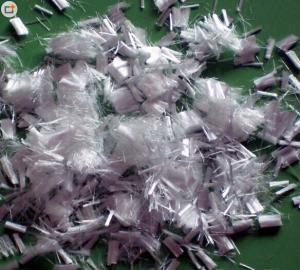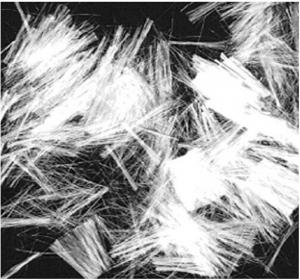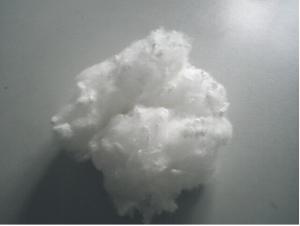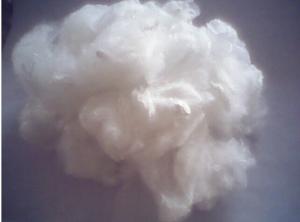Never Run Crack, Crack Stick, Stick To Belt
- Loading Port:
- Qingdao
- Payment Terms:
- TT OR LC
- Min Order Qty:
- 1 m²
- Supply Capability:
- 1000000 m²/month
OKorder Service Pledge
OKorder Financial Service
You Might Also Like
Crack stick construction
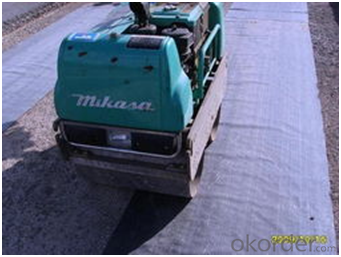
Anti-crack construction effect
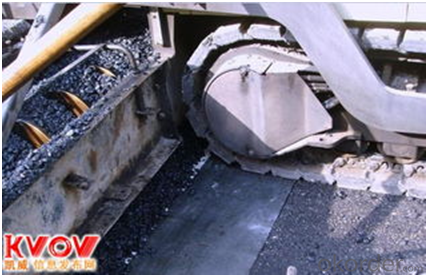
Crack stick
Product introduction
Crack stick (also known as crack stick) is composed of asphalt base polymer, high-strength tensile tire base, high temperature resistance and compatibility with asphalt high-strength compounded fabric. Stick in the cracks or the spalling of the asphalt concrete surface, can reduce and cut off its effect on the temperature shrinkage stress of pavement, thus reduce the reflection crack through the surface of the trend, laying and road because of the isolates abrasion at the grass-roots level and the upper layer, so that the top layer from the effects of multidirectional displacement and the shear stress, for roads, Bridges, airports, etc.
The main performance
1, the isolation effect. Laying crack and the crack surface and asphalt layer isolation, to avoid the direct contact with asphalt layer cracking level, crack tensile stress at the grass-roots level cannot directly transfer the asphalt concrete pavement, reduce the bonding force between the base and surface, but polymer anti-crack stick can enable the lower level very good adhesion into a whole, jointly bear the role of vehicle load, is enough to prevent the interface on the lower level of relative displacement and keep continuous.
2, reinforcement effect. Crack has a certain strength, can absorb a certain amount of tensile stress in the crack, when the crack tensile stress increases and is greater than the crack of tensile strength, crack resistance to deformation, the surface began to crack under the tensile stress in the stick to pass up. Crack stick level will bear all the tensile stress in the crack, crack obviously have the effect of reinforcement, in this sense, it improved the tensile strength of pavement structure layer.
3, energy dissipation cushion. Crack is a certain extensibility of material, high polymer has good low temperature flexibility, laid between the asphalt surface, equivalent to set up an elastic layer, crack tensile stress at the grass-roots level through the anti-cracking polymer spread to a wide range, so as to relieve stress intensity cracks, flexible interlayer can partly tensile energy absorption effect.
4, water seepage control effect. Crack stick seepage-proof layer polymer can form a complete, can partition to the subgrade pavement water penetration, in order to ensure the strength of the base, the base materials properties not deteriorate further. Crack stick for asphalt surface can effectively inhibit cracks propagated up, in the practical engineering play a role of crack resistance of crack and energy absorption effect.
- Q: How do earthwork products affect the drainage system of a construction project?
- Earthwork products, such as soil, gravel, and fill material, play a crucial role in shaping the drainage system of a construction project. These materials determine the slope, elevation, and composition of the ground, which directly impacts the flow of water and the effectiveness of the drainage system. Properly selected and placed earthwork products can ensure that water is directed away from structures, preventing water damage, erosion, and potential flooding issues.
- Q: How are sediment control products used in earthwork?
- Sediment control products are used in earthwork to effectively manage and prevent erosion and sediment runoff. These products, such as sediment barriers, silt fences, and sediment basins, are strategically placed in construction sites to control the movement of sediment-laden water, ensuring the protection of nearby water bodies and minimizing environmental impacts.
- Q: Are there any earthwork products specifically designed for oil and gas projects?
- Yes, there are earthwork products specifically designed for oil and gas projects. These products include geotextiles, geomembranes, geogrids, and erosion control materials. They are used to provide soil stabilization, prevent erosion, control sediment, and protect the environment during oil and gas exploration, drilling, and production activities.
- Q: Can earthwork products be used in coastal protection projects?
- Yes, earthwork products can be used in coastal protection projects. Earthwork products such as sand, gravel, and rocks are commonly used in coastal protection measures such as beach nourishment, dune restoration, and shoreline stabilization. These materials help to mitigate erosion, provide natural barriers against storm surges, and enhance the resilience of coastal areas against flooding and erosion.
- Q: What are the advantages of using geotextile tubes for erosion control on beaches?
- Geotextile tubes offer several advantages for erosion control on beaches. Firstly, they provide an effective barrier against erosion by trapping sand and sediment within their structure. This helps to stabilize the shoreline and prevent further degradation. Additionally, geotextile tubes are easy to install and can be quickly deployed, making them a cost-effective solution for immediate erosion control. They are also durable and resistant to UV rays, ensuring long-term effectiveness. Furthermore, these tubes are environmentally friendly as they are made from non-toxic materials and can be filled with local sediment, minimizing the need for external resources. Overall, geotextile tubes offer a reliable and sustainable option for protecting beaches from erosion.
- Q: What are the advantages of using geotextile fabrics in green roof installations?
- Some advantages of using geotextile fabrics in green roof installations include improved drainage and water retention, increased root protection, enhanced soil stability, and reduced weed growth. Geotextile fabrics also help prevent soil erosion and promote healthier plant growth by providing a barrier against contaminants.
- Q: What are the benefits of using geotextile tubes for sediment control?
- Geotextile tubes offer several benefits for sediment control, including their effectiveness in containing and filtering sediment. They provide a barrier that prevents sediment from spreading, reducing erosion and protecting nearby water bodies from contamination. Geotextile tubes are also flexible and adaptable, making them suitable for various terrains and applications. Additionally, they are cost-effective compared to other sediment control methods, easy to install, and environmentally friendly as they can be reused or recycled.
- Q: How do earthwork products affect the overall aesthetics of a project?
- Earthwork products can significantly impact the overall aesthetics of a project. The choice of materials, such as soil, rocks, and vegetation, can greatly influence the visual appeal of the landscape. Earthwork products, when thoughtfully selected and implemented, can enhance the natural beauty of the surroundings, create harmonious transitions between different elements, and contribute to the overall aesthetics of the project.
- Q: What is the purpose of earthwork products?
- The purpose of earthwork products is to provide solutions for various construction and landscaping projects that require excavation, grading, and shaping of the earth. These products, such as geotextiles, geogrids, and erosion control materials, are used to stabilize soil, prevent erosion, reinforce foundations, and enhance drainage systems, ensuring the durability and longevity of structures and landscapes.
- Q: Civil engineering materials what is the toughness of the material
- The inherent nature of the material varies depending on the material
Send your message to us
Never Run Crack, Crack Stick, Stick To Belt
- Loading Port:
- Qingdao
- Payment Terms:
- TT OR LC
- Min Order Qty:
- 1 m²
- Supply Capability:
- 1000000 m²/month
OKorder Service Pledge
OKorder Financial Service
Similar products
Hot products
Hot Searches
